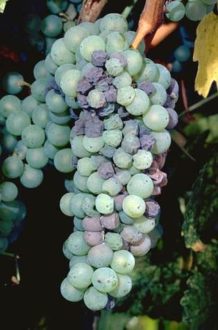Jun 10, 2019Botrytis on the rise in grapes in San Joaquin Valley, California
Botrytis is a well-known disease in most grape growing regions around the world. Normally botrytis is associated with bunch rot, but under the right conditions it can cause damage in other parts of the plant. In the San Joaquin Valley, it is normally present in the spring, or by fall when rain and cooler temperatures are present.
This spring, the weather included more rain and cooler temperatures than normal until the last week of May. The extra amount of rain with cooler conditions have created a perfect climate for botrytis shoot blight in our region. This is an unusual situation for the San Joaquin Valley, where severe incidences have been reported. Under normal conditions basal leaves are affected during the spring and clusters in the fall.
However, during appropriate environment, like the weather conditions that we have experienced in 2019, any green tissue such as leaves, tendrils, canes and immature clusters are prone to infection.
Botrytis infection is commonly observed on the berries after version. At that point the berry skin is softer, and the pathogen can use the fruit juices as food source. Any action to reduce the inoculum before reaching this point in the season is critical. In order to alleviate the damage caused by the disease an integrated pest management (IPM) approach is advised. A good starting point is to implement practices that reduce humidity and free water on tissues, which the pathogen needs to develop.
While we can’t control the amount of rain in our vineyard, we can control how much water we apply by irrigation. Now that the rain seems to be over, overirrigation can maintain a conducive environment for the pathogen. Additionally, canopy management can be used to increase light penetration, increase air flow, and increase cluster exposure to fungicidal sprays.
Such action will reduce the humidity in the canopy and will facilitate the internal distribution of sprayed products for disease control. However, take care not to overexpose the clusters to excessive light, which could lead to sunburn.
n addition, the actions to decrease the humidity, spray will be necessary if a high number of vines are affected. Alternatives exists for organic and traditional growers. Please visit the UCANR IPM web site to see an updated list of products that can be used.
– Gabriel Torres, farm advisor, UCCE Tulare















